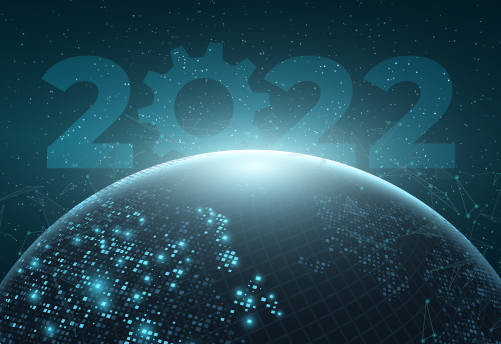
Five Predictions for AI In 2022
To learn more about how Arize can help you better navigate 2022, view a demo or request a trial.
AI is a game of predictions. Every day, machine learning (ML) models in nearly every industry make important predictions to inform everything from demand forecasting to fraud prevention. With that in mind, It’s only fitting that the product leaders of a company that helps humans better understand AI go on the record with some predictions of their own for the year ahead.
But first, a look back. If the events of 2021 make anything clear, it’s that we live in a post-COVID world where anything can happen and once-outlier events are becoming common. Today’s businesses must not only navigate evolving consumer tastes and record demand but also a complex supply chain where inflation, delays, shortages and other unforeseen factors are increasingly common.
It’s a tough environment for any team building and deploying ML models. It’s also a time of incredible opportunity to make an impact.
Here are five outcomes that seem increasingly likely in 2022.
1) AI fairness and bias issues will get worse before they get better
The teams responsible for the AI systems that make millions of life-changing decisions every second – such as whether someone gets a home loan – have been largely homogeneous to date, leaving a big blind spot. An entire generation of data scientists and engineers in our industry are building systems that impact groups of society they don’t understand.
As ML models are deployed in more industries and make higher-stakes decisions, issues around fairness will likely come to a head – serving as a forcing function for better inclusion in hiring to diversify teams, better systems of governance and better ML observability to know whether models are having disparate impacts on marginalized groups (and explain why). While there are good reasons for hope on this front, it will take time.
2) Enterprises will stop shipping AI blind
In 2022, organizations will invest in systems to better understand their AI and know how to fix it when it breaks. The need for this is becoming increasingly clear, as even the most sophisticated data science teams at decacorns uncover bugs impacting model performance hiding in plain sight. ML monitoring and observability solutions that help companies troubleshoot these complex systems, achieve explainability of black box models, and provide guardrails when they make high-stakes decisions are well-positioned to help.
3) The citizen data scientist will rise
Aided by low or no-code tools and deep subject matter expertise, people with specialized knowledge but not necessarily engineering chops will train and deploy ML models in their respective disciplines and industries. A risk manager might develop a model that helps prevent viral outbreaks in hospitals, while a structural engineer might build a model that better predicts metal erosion on bridges. Meanwhile, ML infrastructure tools that cater to data scientists and ML engineers will get more sophisticated and specialized.
4) The machine learning infrastructure ecosystem will get more confusing, crowded and complex
Compared to devops or data engineering, MLops and tools catering to ML engineers are still relatively young as an industry (it’s early days on this hype cycle). With billions of dollars at stake and an increasing need for metrics and tools that are distinct, confusion and specialization will reign before clear winners emerge and a wave of consolidation makes things simpler.
5) ML engineering jobs will outpace available talent, creating a talent crunch
As ML models become part of everyday life, the need for more ML engineers to make ML models work in the real-world will reach a frenzy. Solving this talent crunch will require marshalling resources across academia, the private sector and government to reach into underserved and underrepresented communities where talent exists but often does not get educational or early job opportunities. This is arguably one of the most urgent tasks before the industry and may prove a make-or-break issue.
A Resolution for All
While not every trend identified here might seem to augur a bright future, there are good reasons for optimism. If everyone in the industry sets and keeps New Year’s resolution to make this industry better – more fair, inclusive, diverse, and transparent – we can begin to achieve an AI-powered revolution that truly benefits all.






